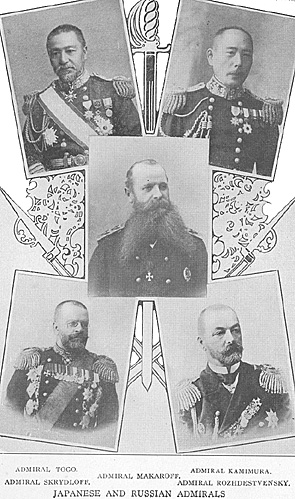
Though nominally the fleets of the two Powers were fairly equal, Japan possessed several very considerable advantages which, in the opinion of experts, changed that paper equality to marked superiority on her side.
In the first place, the Chino-Japanese war only ten years ago had given her naval officers and men an invaluable experience of fighting on the grand scale under modern conditions; in the next place, their fleet was much more of a pattern; and in the third place it was operating from a base fully capable of providing all the needs and reinforcements entailed by losses in war, including a ready coal supply.
Russia, on the other hand, had for its only bases Port Arthur and Vladivostock, the one inadequate to the multifarious needs of her fleet, and the other ice-bound in winter, and so situated geographically as to be completely isolated from what promised to be the main scene of operations.
Although Port Arthur had been rendered almost impregnable as a fortress, the Russians had not had time to complete it as a naval dockyard, and at the outbreak of war it possessed only one dry dock, and that not capable of accommodating vessels of the largest size. At Vladivostock the channel out of the harbor could only be kept free by ice-breakers. In the event of naval disasters, Russia, therefore, had no possibility of repairing her lame ducks, while the radius of her fleet's activity was limited by the fact that her only supplies of coal were to be obtained at Port Arthur.
In the situation, therefore, which presented itself at the outbreak of war, this powerful naval force was practically deprived of mobility. It could not leave Port Arthur for more than a short cruise; and while it remained there it must be specially vulnerable to attack, lying in an open roadstead and huddled together in order to enjoy the protection of the guns of the fortress.
Back to Table of Contents -- The Russo-Japan War # 2
Back to The Russo-Japan War List of Issues
Back to MagWeb Master Magazine List
© Copyright 2005 by Coalition Web, Inc.
This article appears in MagWeb.com (Magazine Web) on the Internet World Wide Web. Other articles from military history and related magazines are available at http://www.magweb.com
